Snorkelling Rottnest Island/Wadjemup: Parker Point
If you’re heading to Rottnest Island / Wadjemup for a day in the water, Parker Point on the island’s eastern side is a beautiful place to start. We visited in September (cooler water, overcast skies) and still loved it.
Parker Point – Snorkelling Rottnest Island / Wadjemup
What It’s Like
Parker Point is a white-sand cove with clear turquoise water and easy entry from the beach. The limestone reef supports meadows of seagrass and kelp, with low caverns and ledges to peer into from the surface. It’s sheltered enough for relaxed snorkelling, but open to the easterly, so conditions can vary.
Photo: Coastline near Parker Point, Rottnest Island / Wadjemup by Pedro Szekely, via Wikimedia Commons
The Snorkelling Experience
Conditions: In September the forecast said ~18.5 °C water, but it felt colder. Air temps hovered around 20 °C with overcast skies, a light easterly and an outgoing tide. Visibility was mostly good with occasional patchy spots.
Entry & route: We took the stairs down from the bus stop (Stop 5), set up on the sand, and waded in. With the tide dropping, we tried to avoid stepping on seagrass as we swam out ~50 m to the deeper edge where the reef forms small caverns bordered by kelp and seaweed.
What we saw: Crystal-clear water over rippling white sand, schools of larger fish cruising the drop-off, countless tiny crabs on the flats, and swathes of seagrass (Posidonia australis) and kelp in yellows, pinks, greys and greens — some fronds reaching ~3 m to the surface. There are corals around Rottnest (around 20 species), but on our day the stars were the kelp forests and seagrass meadows.
Here’s a video from our swim:
Snorkelling over the glorious meadows of Posidonia australis.
Marine Life We Saw
Seagrass meadows teeming with small invertebrates, schools of larger reef fish over the sandy flats, and busy crabs. The limestone ledges held pockets of reef life, with kelp and seaweed gardens providing most of the colour and movement.
Why Snorkel Here
Parker Point combines easy beach access with clear water, classic Rottnest limestone reef, and photogenic seagrass and kelp “gardens.” Even on a cooler, overcast day it delivered a satisfying, low-effort snorkel with plenty to see from the surface.
Getting There – ferries & island transport
Reach Rottnest / Wadjemup by ferry from Perth, Fremantle or Hillarys (about 40 minutes). Once on the island, you can cycle (bring your own or hire an e-bike) or use the hop-on hop-off bus ($25/day). Buses run one way, roughly every 30 minutes, and take ~1 hour to loop the island (~16 stops).
Time-saving tips: Book the first ferry over and the last ferry back, pre-choose your bays, and make a beeline to them (the one-way bus loop can eat the day). With good planning you can fit 2–3 snorkels. Alternatively, stay on the island (book early; it’s pricey) or base yourself in Fremantle for 2–3 days and day-trip across.
Island resources: Rottnest Island map • Snorkelling tours
Would We Return to Parker Point?
Yes. Now that we understand the bus loop and timing, we’d plan for multiple bays (Parker Point, Little Salmon Bay, Henrietta Rocks on the east; Little Armstrong and Parakeet Bay further west). On our first visit we only managed Parker Point — but it was absolutely worth it.
Our Verdict – Parker Point Snorkelling
- Snorkel rating: ⭐⭐⭐⭐⭐ (5 out of 5)
- Highlights: clear water, elegant seagrass meadows, colourful kelp forests, easy beach entry.
- Plan around cooler water in winter/spring; bring adequate exposure protection.
About Rottnest Island / Wadjemup (quick facts)
Rottnest / Wadjemup sits off Western Australia, west of Fremantle. It’s car-free (bike or bus), a Class A nature reserve with ~19 km² of beaches and bays, famous for quokkas, seagrass and kelp habitats, ~20 coral species and ~400 fish species, plus 13 shipwreck sites and a long cultural history. The island’s Noongar name is Wadjemup.
More to explore: Little Salmon Bay has a signed snorkel trail; the western end hosts a long-nosed fur seal colony.
Plan your route: Start with the island map and consider booking a snorkelling tour if you prefer a guide.



